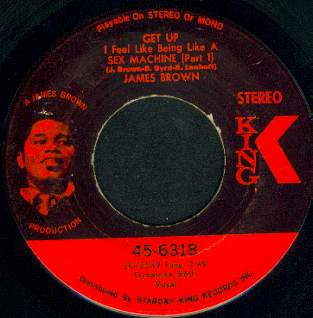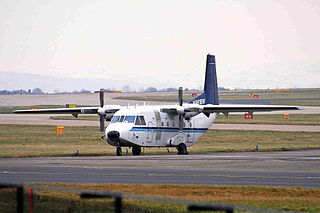
United Airlines Flight 93 was a domestic scheduled passenger flight that was hijacked by four al-Qaeda terrorists on the morning of September 11, 2001, as part of the September 11 attacks. The hijackers intended to crash into a federal government building in Washington, D.C. The operation partially failed when the passengers fought back, forcing the terrorists to crash the plane in a Pennsylvania field, thwarting their main objective, but killing everyone aboard the flight. The airliner involved, a Boeing 757-222 with 44 passengers and crew, was flying United Airlines' daily scheduled morning flight from Newark International Airport in New Jersey to San Francisco International Airport in California, making it the only plane hijacked that day not to be a Los Angeles-bound flight.
The September 11 attacks of 2001, in addition to being a unique act of terrorism, constituted a media event on a scale not seen since the advent of civilian global satellite links. Instant worldwide reaction and debate were made possible by round-the-clock television news organizations and by the internet. As a result, most of the events listed below were known by a large portion of the world's population as they occurred.

Air Florida Flight 90 was a scheduled U.S. domestic passenger flight operated by Air Florida from Washington National Airport to Fort Lauderdale–Hollywood International Airport, with an intermediate stopover at Tampa International Airport. On January 13, 1982, the Boeing 737-222 registered as N62AF crashed into the 14th Street Bridge over the Potomac River.

Betty Ann Ong was an American flight attendant who worked for American Airlines and boarded Flight 11, the first airplane hijacked during the September 11 attacks. Ong was the first person to alert authorities to the hijackings taking place that day. Shortly after the hijacking, Ong notified the American Airlines ground crew of the hijacking, staying on the radiophone for 23 minutes to relay vital information that led to the closing of airspace by the FAA, a first in United States history. For this, the 9/11 Commission declared Ong a hero.
"Beneath You" is the second episode of the seventh and final season of the television show Buffy the Vampire Slayer. The episode aired on October 1, 2002 on UPN.

Candalyn "Candi" Kubeck was an American commercial airline pilot and the captain of ValuJet Flight 592. This flight crashed into the Everglades in 1996, after oxygen generators illegally placed inside a cargo hold, which started and maintained a fire that disrupted aircraft functionality and flooded the entire cabin and cockpit with smoke. The crash made Kubeck the first female captain to die in a commercial airline crash.

Michael Kinsey Joy is an American TV sports announcer, businessman, and former politician who currently serves as the lap-by-lap voice of Fox Sports' coverage of NASCAR. His color analyst is Clint Bowyer. Counting 2023, Joy has been part of the live broadcast of 44 Daytona 500s. He also serves as expert analyst for A&E Networks History Channel and FYI live TV coverage of collector car auctions.

Southern Illinois Airport is a public airport in Jackson County, Illinois, United States. It is located three nautical miles (6 km) northwest of the central business district of Carbondale and east of Murphysboro. This airport is included in the FAA's National Plan of Integrated Airport Systems for 2015–2019, which categorized it as a general aviation facility.

"Get Up Sex Machine" is a song recorded by James Brown with Bobby Byrd on backing vocals. Released as a two-part single in 1970, it was a no. 2 R&B hit and reached no. 15 on the Billboard Hot 100.
"Ginger Bloke" is a character, played by Danny Morgan, who appears during Zane Lowe's Gonzo on MTV2 where he "interviews" well known musical acts. However, these interviews are edited together using previously recorded interview footage and are made for humorous effect. He usually mocks the artists in some way, and they appear to react comically to his comments and actions.

Air Illinois was a regional airline based in Carbondale, Illinois.

Imperial Airlines Flight 201/8 was a charter flight by the United States Army to transport new recruits to Columbia, South Carolina for training. On November 8, 1961, the aircraft crashed as it attempted to land at Byrd Field, near Richmond, Virginia. This was the second deadliest accident in American history for a single civilian aircraft.

Braniff International Airways Flight 542, a Lockheed L-188 Electra, registration N9705C, was a scheduled domestic flight from Houston, Texas, bound for New York with scheduled stops in Dallas and Washington, D.C. On September 29, 1959, 23 minutes into the 41-minute flight from Houston to Dallas Love Field, the aircraft disintegrated in mid-air approximately 3.8 miles (6.1 km) southeast of Buffalo, Texas, killing everyone on board.

The Package Q Airstrike was the largest airstrike of the Gulf War and the largest strike of F-16 Fighting Falcon fighter aircraft in military history. Many aircraft including the F-117 Nighthawk were used to attack targets in Baghdad, which was the most heavily defended area of Iraq. The same target was hit several times by F-117s, and the last package consisted of seventeen F-111F Aardvarks on the 19th day of the war.

The 2014 5-hour Energy 400 Benefiting Special Operations Warrior Foundation was a NASCAR Sprint Cup Series stock car race that was held on May 10, 2014, at Kansas Speedway in Kansas City, Kansas. Contested over 267 laps on the 1.5 miles (2.4 km) tri-oval, it was the eleventh race of the 2014 NASCAR Sprint Cup Series. Jeff Gordon won the race, his first win of the season and 89th overall, while Kevin Harvick finished second. Kasey Kahne, Joey Logano, and Dale Earnhardt Jr. rounded out the top five. The top rookies of the race were Kyle Larson (12th), Austin Dillon (19th), and Michael Annett (25th).

On October 30, 2014, a Beechcraft King Air B200 twin turboprop crashed into a building hosting a FlightSafety International (FSI) training center shortly after taking off from Wichita Mid-Continent Airport in Wichita, Kansas. The pilot, the only person on board, was killed along with three people in the building; six more people in the building were injured.

The 2016 Hollywood Casino 400 was a NASCAR Sprint Cup Series race held on October 16, 2016, at Kansas Speedway in Kansas City, Kansas. Contested over 267 laps on the 1.5 mile (2.4 km) intermediate speedway, it was the 31st race of the 2016 NASCAR Sprint Cup Series season, fifth race of the Chase and second race of the Round of 12.

Aeroflot Flight 101/X-20 was a scheduled domestic passenger flight from Moscow to Alma-Ata via Omsk, Soviet Union, that crashed in low visibility conditions on 4 January 1965, killing 64 of the 103 people on board.

Blackwater 61 was the callsign of a CASA 212, registration N960BW, operated by Presidential Airways Inc, the aviation subsidiary of the private security contractor Blackwater USA, that crashed in the mountains of remote central Afghanistan on November 27, 2004. The turboprop airplane was carrying three military passengers and three members of the flight crew when it crashed. According to the NTSB investigative report of the accident, the Blackwater pilots were "behaving unprofessionally" and were "deliberately flying the nonstandard route low through the valley for fun." The accident contributed to the debate over the use of private military contractors in war-zones and Blackwater's hiring practices and standard operating procedures. Blackwater aircraft had been operating in Afghanistan under contract with the U.S. military to transport troops and supplies throughout the country. All six people aboard the aircraft died in the crash, including one who initially survived but later died awaiting rescue.

On August 10, 2018, a Horizon Air De Havilland Canada Dash 8-400 was stolen from Seattle–Tacoma International Airport (Sea–Tac) in Seattle, Washington. The perpetrator, 29-year-old Richard Russell, was a Horizon Air ground service agent with no piloting experience. After Russell performed an unauthorized takeoff, two McDonnell Douglas F-15 Eagle fighters were scrambled to intercept the aircraft. Sea–Tac air traffic control made radio contact with Russell, the sole occupant, who described himself as a "broken guy, got a few screws loose, I guess." About 1 hour and 15 minutes after takeoff, Russell died by intentionally crashing the aircraft on lightly populated Ketron Island in Puget Sound.

















